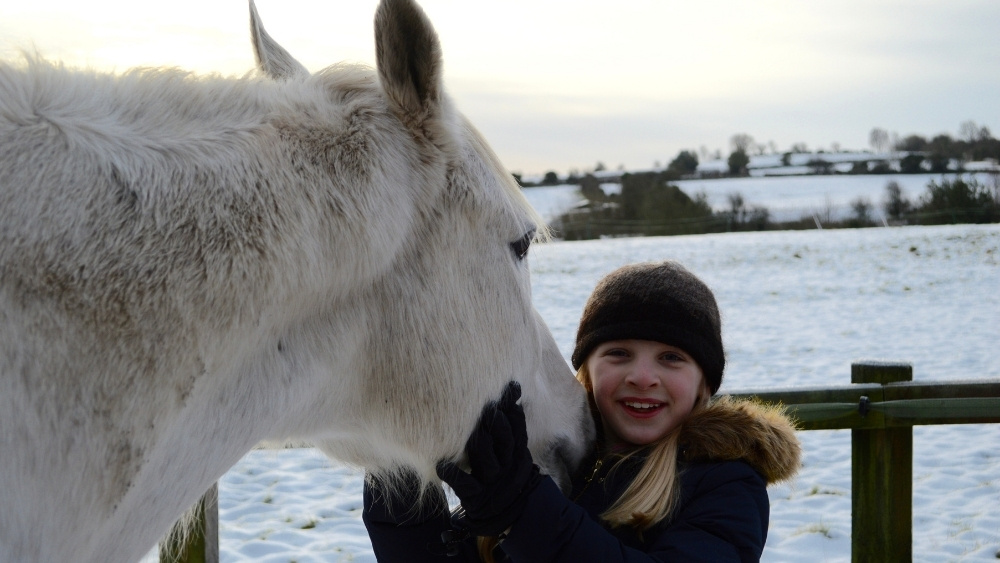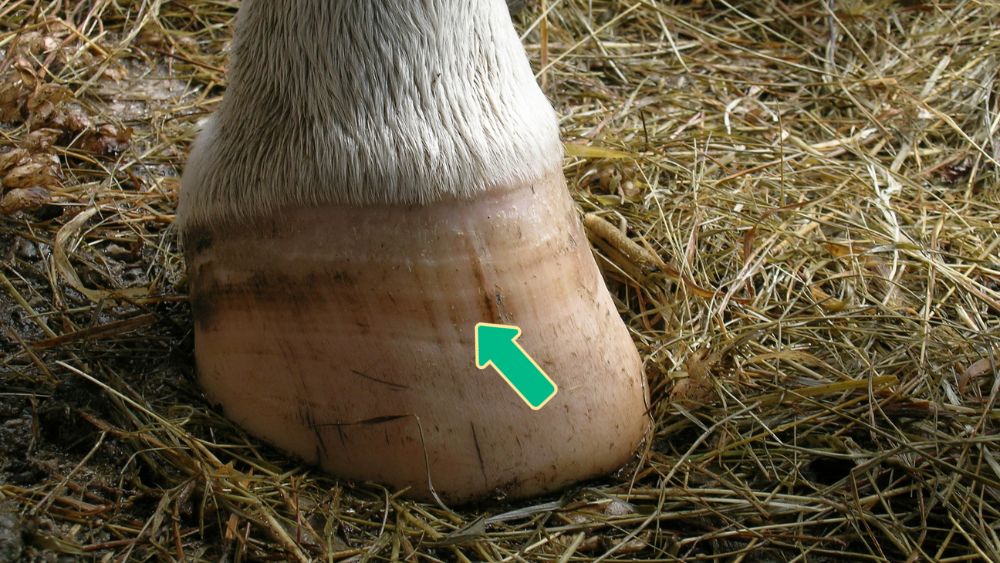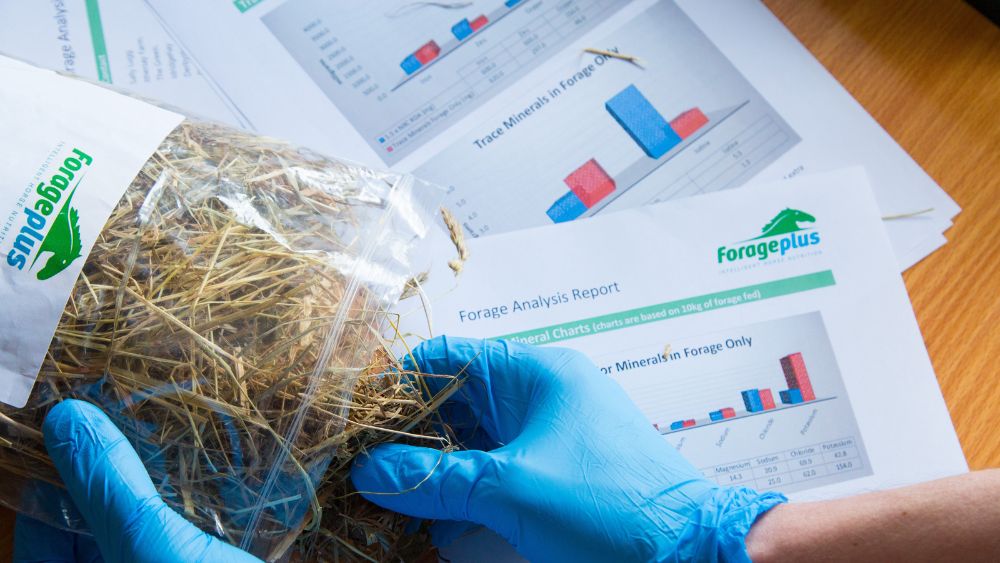- Mycotoxins and the Horse - April 1, 2023
- Winter Horse Feeding - February 3, 2022
- Feeding a Performance Horse - December 21, 2021
Magnesium for horses
Magnesium for horses often receives little attention in equine nutrition. For example, you will rarely see it listed in the analysis on a feed bag. Despite this, it could easily be argued that no other mineral has as many important functions for supporting the best health in horses.

Why is magnesium important for horses?
Science has so far identified over 300 enzymes that require magnesium to function. Virtually any body function you can think of needs adequate magnesium at some step along the line.
Magnesium plays a vital role in the health and well-being of horses. It is an essential mineral that has a stabilizing effect on the nervous system and is a component of bone, cell membranes, and chromosomes. Magnesium is also important in maintaining glucose and insulin homeostasis.
The biochemistry is complicated but basically, the energy locked into your horse’s food is transformed and stored as high-energy bonds between phosphate molecules. The highest-energy form is ATP, adenosine triphosphate. Magnesium is required to stabilize and store ATP. Without it, all cells would die.
Magnesium for horses is also required for the production of protein, carbohydrates, lipids, DNA, RNA, and the antioxidant glutathione. You can’t get much more basic to survival and horse health than that list. It is also involved in the maintenance of blood vessels and the lung’s bronchi in a normal, open state.
Many owners of good doer horses have problems with crests and insulin resistance. Magnesium for horses is involved in both the metabolism of glucose and insulin sensitivity and low intracellular magnesium is a risk factor for insulin resistance in horses. This important major mineral can contribute to normal fat distribution in horses by minimizing cresty necks or fatty pockets. Research has suggested that as magnesium for horses helps cells respond to insulin that this mineral may improve insuling sensitivity especially in those horses who are overweight.
How does magnesium for horses affect hooves?
As magnesium for horses is vital for the production of protein, increasing levels of this mineral in the diet can have a big effect on the health of hooves. The hoof wall angle can become steeper when the lamellar connection becomes tighter. White hooves often show a marked colour change from white to yellow-white at the point where higher magnesium supplementation was begun. Black hooves will change to a darker black.

How does magnesium affect horse muscles?
Magnesium deficiency can lead to muscle irritability. Magnesium for horses works closely with calcium in supporting correct muscle contraction. When muscles receive nerve signals telling them to contract, calcium is released from special compartments within cells and moves onto muscle fibres causing them to contract. Magnesium stops the contraction by pushing calcium back into these compartments.
By having magnesium and calcium in the right ratios, in the daily diet, muscles are enabled to relax. This aids recovery and reduces the muscle pain and cramping that can follow a heavy exercise session. As magnesium is also an electrolyte mineral that is lost in sweat, the more work a horse is in, the more important it is to get basic levels correct.
How magnesium affects horse stress and circulation
Magnesium can improve tolerance to stress and resistance to illness and injury. Performance horses in heavy exercise will develop better resilience if magnesium levels are correctly balanced to the forage eaten. Stress causes magnesium to be depleted in the body faster. This means it is vital to supplement adeqaute amounts of magnesium for horses which is matched to the grass or hay eaten.
Where can magnesium be found in the horses body?
In horses, 60% of magnesium can be found in the bones and the other 40% can be found in extracellular fluids and soft tissues. It is especially important to maintain optimal levels, bvalanced to calcium, of this mineral in horses that are growing or being heavily exercised.
Despite its importance, magnesium for horses is often overlooked in equine diets and can be deficient or overshadowed by high calcium levels which can interfere with absorption.
How is magnesium absorbed in the horse?
The majority of absorption of magnesium for horses happens in the small intestine with very little occurring in the hindgut. The majority of this mineral is absorbed by slowly moving towards the bloodstream where its concentrtion is lower. This is called passive diffusion.
When magnesium is high, due to dietary levels, more will be absorbed. A minor portion of absorption occurs by active transport in which magnesium is pumped across the cell membrane through special transporters.
Calcium and magnesium compete with each other for absorption because of these special transporters also being used to move calcium across cell membranes. For this reason, when calcium is high in the diet, perhaps because grass, hay or haylage is high in calcium or a calcium high bucket feed is being fed (alfalfa, beet pulp and forge based feeds), it is very important to increase magnesium so it is balanced with calcium. Dietary ratios of two-parts calcium to one-part magnesium are optimal to have proper absorption of both minerals for adult categories of horses.
While calcium is often a major trigger/facilitator of body reactions, magnesium’s function is more often to moderate and regulate. This shows up clearly in the signs and symptoms of magnesium deficiency.
At Forageplus we regularly see ratios of calcium to magnesium over four or even five to one. This is why we strongly recommend testing forage and using specific calculations to match the bucket feed, and magnesium for horses supplementation, to what is contained in the grass, hay or haylage consumed in large amounts each day.
What are the symptoms of magnesium deficiency in horses?
Magnesium deficiency in horses can manifest in many ways. Some of the most common symptoms include:
- Horses exhibiting behavioural issues such as hypersensitivity to sound or touch, irritability, and jumpiness. This is due to the role of magnesium in calming the nerves, making them less prone to firing.
- Horses having muscular problems such as increased muscle tone, twitching or cramping, and even signs of tying up. These symptoms are often seen in horses with inadequate magnesium intake.
- Horses not being tolerant of long periods of work.
- In extreme cases of magnesium deficiency, horses may exhibit weakness and even an inability to get up from lying down. This is related to magnesium’s role in maintaining cell ATP stores.
- Magnesium for horses with low intake could easily be labelled as having a primary myopathy.
- Low magnesium in horses can also lead to a lower threshold for muscle release, leading to fine fasciculations in the muscles, and a spontaneous low-level quivering, most commonly seen in the triceps and above the stifle.
- In other species, magnesium deficiency has also been clearly identified as both a cause and effect of insulin resistance.
- Hypomagnesemia, or low magnesium levels, is fairly common in horses and can be caused by factors such as diarrhoea, a high-fat diet, low magnesium intake and/or high calcium or phosphorus intake, kidney disease in a high urine output phase, and more.
- If your horse experiences thumps (synchronous diaphragmatic flutter) they likely are low in magnesium.
- Horses with colic might benefit from magnesium supplementation. Low magnesium levels are seen in 78% of horses with enterocolitis. A study reported that approximately 40% of horses that have colic will have endotoxemia (presence of bacteria from inside the intestine in the blood) which triggers an immune response and causes magnesium levels to drop.
- Some horses with insufficient dietary magnesium will become fatigued and resistent to training.
It’s important to note that many of these symptoms can also be caused by other health issues, so it’s crucial to consult with a veterinarian if your horse is exhibiting any of these signs.
How do I know if my horse is deficient in magnesium?
Determining if your horse is deficient in magnesium can be done through several methods:
- Diet Analysis: The most accurate way to determine if your horse’s diet is deficient in magnesium is through a diet analysis, especially a hay, grass or haylage analysis. This will provide a detailed breakdown of the nutrients in your horse’s diet, including magnesium.
- Blood and Urine Tests: Another method of testing magnesium for horses is through blood and urine tests. The best test of the horse’s status to date is called fractional clearance of magnesium. This is determined by an equation after measuring concentrations of creatinine and magnesium in both blood and urine simultaneously. However, these tests are not very sensitive to levels in between which could still be interfering with normal function.
- Observing Symptoms: You can also observe your horse for symptoms of magnesium deficiency. These can include behavioural issues such as hypersensitivity to sound or touch, irritability, and jumpiness, muscular problems such as increased muscle tone, twitching or cramping, poor hoof quality, and even signs of tying up.
- Trial Supplementation: If you suspect a muscular, insulin resistance, or behavioural issue with your horse may have a component of inadequate magnesium intake, try supplementing with 5 to 10 grams of elemental magnesium per day. If the symptoms improve, this could indicate a magnesium deficiency.
Remember, these methods can only provide an indication of magnesium deficiency. For a definitive diagnosis or analysis, it’s always best to consult with a veterinarian or equine nutritionist.
What are the recommended daily magnesium for horses intake levels?
The recommended daily intake of magnesium for horses can vary based on several factors including the horse’s size, diet, and specific health conditions. However, some general guidelines can be provided:
- The National Research Council has established recommended minimum intakes of magnesium for horses for all ages and classes/uses. The average size adult horse at maintenance requires around 9.5 grams/day of magnesium. Growing, pregnant, and lactating horses have much higher requirements.
- A horse’s intake of magnesium should always be balanced to the total calcium in the daily diet and increased 1.5 to 2 times if they are under going moderate to intense exercise.
- If you suspect a muscular, insulin resistance, or behavioural issue with your horse may have a component of inadequate magnesium intake, try supplementing with 5 to 10 grams of elemental magnesium per day.
- For trial purposes, horses on grass hay or pasture-based diets with no or only low levels of clover or alfalfa can be supplemented with 10 to 15 grams/day of elemental magnesium short term to assess for effects.
- If a horse’s diet is deficient in magnesium the best magnesium for horses is low iron, pharmaceutical grade magnesium oxide.
- When dealing with a laminitic horse with poor IR control, a hard crest, acute and persistent laminitis and little suspicion of Cushing’s / PPID but a correct hoof trim and minerals balanced to forage then if the diet is low sugar/starch lowering the ratio of calcium to magnesium to 1:1.5 could be beneficial. This protocol is well established through the ECIR Horse Group.
Remember, these are general guidelines and the exact amount of magnesium for horses can vary, from 10 to 12 elemental grams up to 20 grams, according to the amounts in grass, hay and haylage and the bucket feed used. If in doubt contact Forageplus for more advice.
How can I test the magnesium levels in my horse’s hay?
The most accurate way to determine magnesium for horses levels in hay, grass or haylage is through a forage analysis. This involves taking a sample of the hay and sending it to a horse feed company for testing. The company will then provide a detailed report on the mineral content of the hay, including magnesium.
Make sure you choose a detailed horse-orientated report so that you can understand what your horse needs rather than an agricultural animal like a cow.
You can obtain a hay sample by using a hay probe, which extracts a core sample from the bale. It’s recommended to take multiple samples from different bales to get a representative sample.
Once you have your sample, you can send it to a horse feed company that specializes in forage testing.
Remember, the results of the hay analysis will only be as good as the sample you provide, so it’s important to ensure you’re taking a representative sample that accurately reflects the hay your horse is consuming.
If hay analysis isn’t possible because the supply changes too frequently, then Forageplus have data which they have collected over many years which they have used to form a typical profile for forage grown in the UK and Europe. Using an off the shelf Forageplus, foorage focused balaner is better than blindly buying a supplement without considering the levels of minerals in it.

What are some common sources of magnesium for horses?
Magnesium is present in all equine feeds but levels can vary considerably. Some common sources of magnesium for horses include:
- Forages: Both hay and pasture grasses can provide magnesium, although the exact amount can vary based on the type of forage and the soil in which it was grown.
- Grains: Whole grains, brans, and germs tend to have higher levels of magnesium.
- Alfalfa: Alfalfa is often higher in magnesium compared to other types of hay. However, it also has high calcium levels which may compete for absorption.
- Beet Pulp: Beet pulp is another feed ingredient that can provide magnesium.
- Supplements: If a horse’s diet is deficient in magnesium, it may be necessary to provide a magnesium supplement. These can come in various forms, such as magnesium oxide or magnesium chloride.
What supplemental magnesium for horses is best?
The main factors to consider when deciding which magnesium supplement is best for your horse is based on a cost versus absorption factor. Some forms of magnesium are highly absorbable but contain low amounts of elemental magnesium and are very expensive in the high feed rates needed for a horse.
The most common forms to be used in horse supplements are magnesium oxide, magnesium sulphate and magnesium chloride. Evaluation of these forms was carried out in foals fed purifed diets
Some supplements are less concentrated meaning you need to feed larger amounts to provide the same amount of mineral. For example, to provide 10 grams of elemental magnesium, you would need to feed approximately 17 grams of magnesium oxide compared to 186 grams of magnesium gluconate. Feeding 186 grams of magnesium gluconate each day would mean you would have to rob a bank!
If you choose a cheap form of magnesium for horses such as magnesium chloride you will be able to afford the feed rate but you will have to feed five times the amount of magnesium chloride to provide the same amount of elemental magnesium as that in magnesium oxide. Magnesium chloride is bitter and not well accepted by horses, so feeding high amounts becomes problematic from a palatability point of view. More on the difference between these two forms of magnesium can be found here.
The most cost and absorption effective form is a high quality, low iron form of magnesium oxide because it is readily absorbable, contains high levels of elemental magnesium, and is one of the cheapest sources when calculated on a daily basis.
It is important to note that the horse’s overall diet, including all feeds and supplements, should be taken into account when considering the intake of magnesium for horses. If you suspect your horse is not getting enough magnesium, it’s recommended to have a diet analysis done, including a hay or pasture analysis if possible.
The heavier the work load a horse is under the more important an accurate diet analysis with reference to forage analysis becomes.

Are there any risks or side effects associated with magnesium supplementation in horses?
Supplementation of magnesium for horses is generally considered safe, and horses have built-in protection against oral overdoses. The absorption from the intestinal tract is simply too gradual to result in excessively high blood levels, and the kidneys are well-equipped to excrete excesses.
However, there are a few potential risks and side effects to be aware of:
- Over-supplementation: While it’s difficult to give a horse too much magnesium due to their ability to excrete excess amounts in their urine, it is still possible. Over-supplementation could potentially lead to digestive upset or interfere with the absorption of other important minerals. Digestive upset is more likely to occur with magnesium sulphate rather than oxide.
- Diet Imbalance: Adding a magnesium supplement to a diet that is already balanced could disrupt the balance of other minerals in the horse’s diet. It’s important to ensure that the diet maintains a proper balance of minerals, including a dietary calcium-to-magnesium ratio no higher than 2:1; and between 1.5:1 and 2:1 for horses with magnesium-related symptoms such as muscle sensitivity, laminitis etc.
- Individual Sensitivity: Some horses may have individual sensitivity to magnesium supplements, which could potentially lead to side effects. However, this is rare.
- Alfalfa-based Diets: Horses on alfalfa-based diets will need more magnesium (up to 20 grams/day), but this is not advisable because of the enterolith risk with alfalfa. A better approach would be to switch to a grass hay diet and reduce the percentage of alfalfa in the diet.
As with any supplement, it’s always best to consult with an equine nutritionist before starting a horse on magnesium supplements. Forageplus can help determine the appropriate feed rate and monitor the horse for any potential side effects.
How can I perform a diet analysis for my horse?
Performing a diet analysis for your horse involves several steps:
- Hay Analysis: The cornerstone of your horse’s diet is hay or grass from pasture, so it’s essential to get it analysed. This will provide a detailed breakdown of the nutrients in the hay, including magnesium. It is not just magnesium for horses that matters it is the balance between every nutrient that the horse needs in the daily diet. If the hay supply changes too frequently for an analysis, then use a forage focused horse feed balancer.
- Record Feed Intake: Keep track of how much hay and concentrate your horse eats by actual weight. This information is crucial if you ever have problems with weight gain or loss.
- Consider Supplements: If your horse has special needs, you might need to consider more targeted supplements. However, remember that there’s no supplement that can substitute for the correct foundation diet. Getting the basics right, matching the diet to the hay and grass eaten is the basics and the first thing to do in every single case.
- Consult a Professional: After you have the analysis in hand, you might need assistance to balance your horse’s diet. You can ask Forageplus who are the leading forage focused horse nutrition experts in the UK. They are very knowledgeable about matching equine nutrition to grass and hay and have year’s of experience.
- Monitor Your Horse: Keep a journal for your horse and jot down notes of things that may be important. This can help you notice any changes in your horse’s condition that might indicate a nutritional deficiency or excess.
Remember, diet analysis is a tool to help you provide your horse with the proper nutrition he or she needs. It’s always best to consult with a professional to ensure the diet is properly balanced and meets all of your horse’s nutritional needs.
Stay ahead of the curve with the latest horse health articles.
Sign up to receive our latest eBook’s and Podcast’s directly to your inbox!
Last Updated on October 3, 2023 by Forageplus Team


